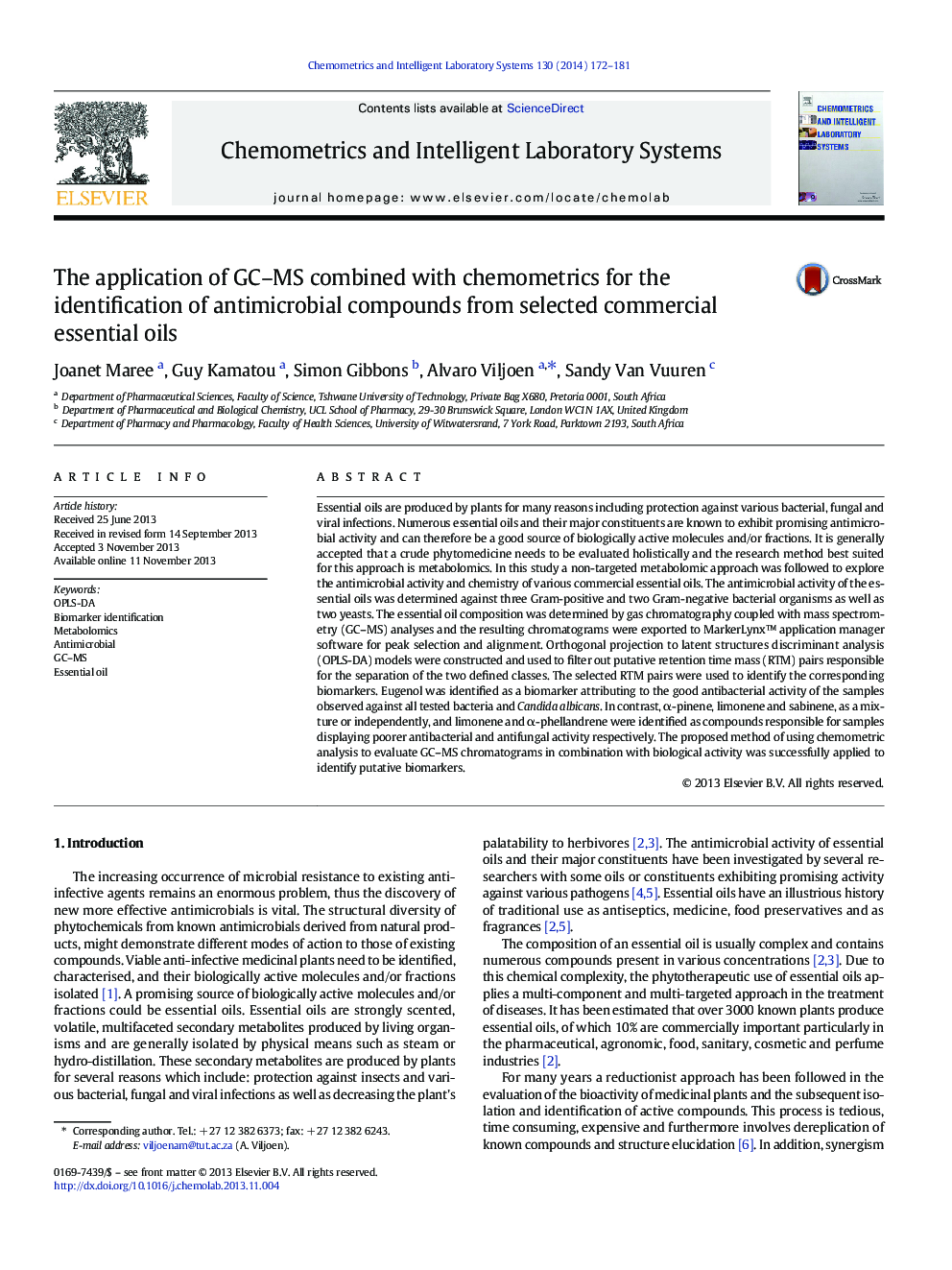| کد مقاله | کد نشریه | سال انتشار | مقاله انگلیسی | نسخه تمام متن |
|---|---|---|---|---|
| 1180681 | 1491548 | 2014 | 10 صفحه PDF | دانلود رایگان |

• Determined the antimicrobial activity and composition of 158 essential oils.
• Constructed valid OPLS-DA models to filter out putative biomarkers.
• Identified Eugenol as a biomarker attributing to good antibacterial activity.
• Successfully applied proposed metabolomics and chemometrics method.
Essential oils are produced by plants for many reasons including protection against various bacterial, fungal and viral infections. Numerous essential oils and their major constituents are known to exhibit promising antimicrobial activity and can therefore be a good source of biologically active molecules and/or fractions. It is generally accepted that a crude phytomedicine needs to be evaluated holistically and the research method best suited for this approach is metabolomics. In this study a non-targeted metabolomic approach was followed to explore the antimicrobial activity and chemistry of various commercial essential oils. The antimicrobial activity of the essential oils was determined against three Gram-positive and two Gram-negative bacterial organisms as well as two yeasts. The essential oil composition was determined by gas chromatography coupled with mass spectrometry (GC–MS) analyses and the resulting chromatograms were exported to MarkerLynx™ application manager software for peak selection and alignment. Orthogonal projection to latent structures discriminant analysis (OPLS-DA) models were constructed and used to filter out putative retention time mass (RTM) pairs responsible for the separation of the two defined classes. The selected RTM pairs were used to identify the corresponding biomarkers. Eugenol was identified as a biomarker attributing to the good antibacterial activity of the samples observed against all tested bacteria and Candida albicans. In contrast, α-pinene, limonene and sabinene, as a mixture or independently, and limonene and α-phellandrene were identified as compounds responsible for samples displaying poorer antibacterial and antifungal activity respectively. The proposed method of using chemometric analysis to evaluate GC–MS chromatograms in combination with biological activity was successfully applied to identify putative biomarkers.
Journal: Chemometrics and Intelligent Laboratory Systems - Volume 130, 15 January 2014, Pages 172–181